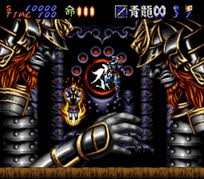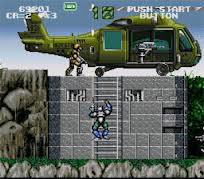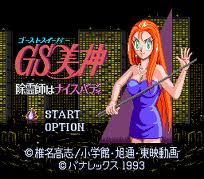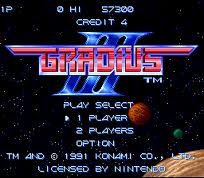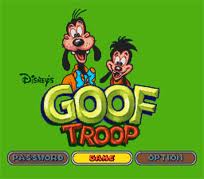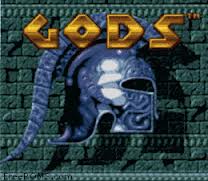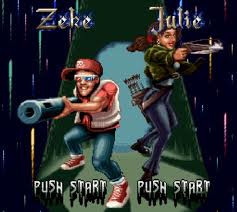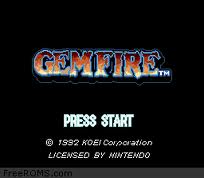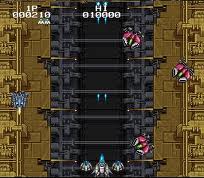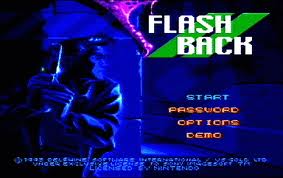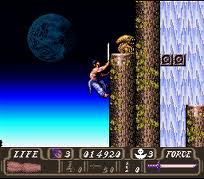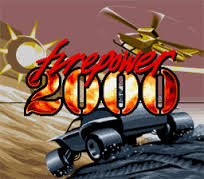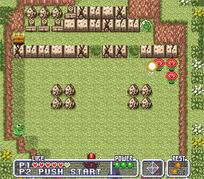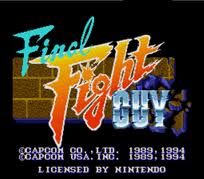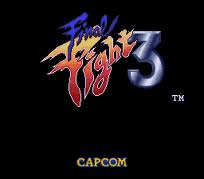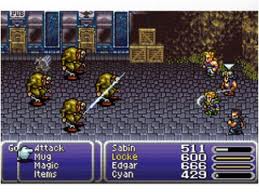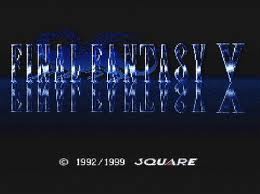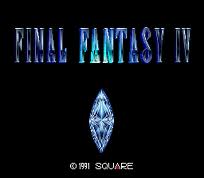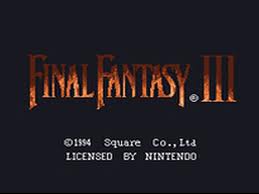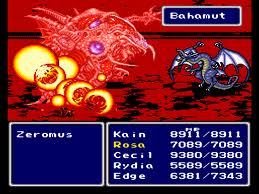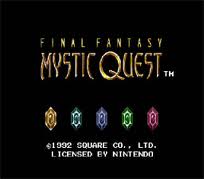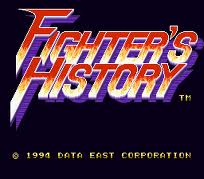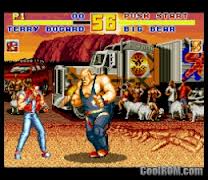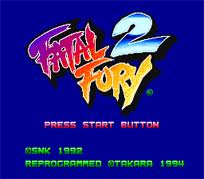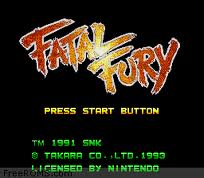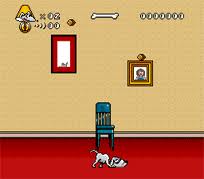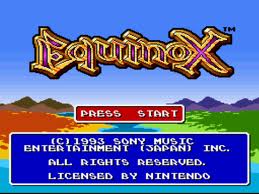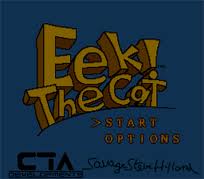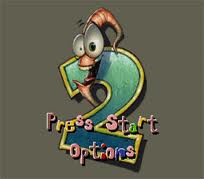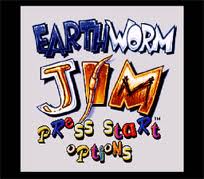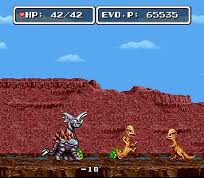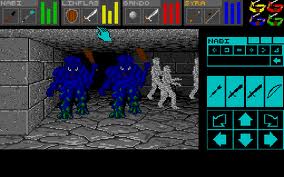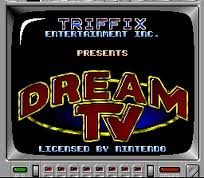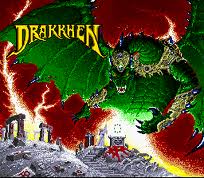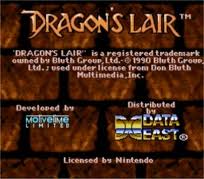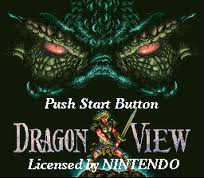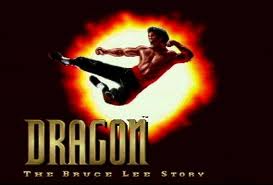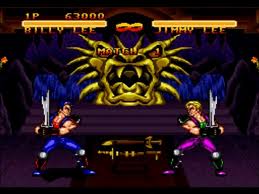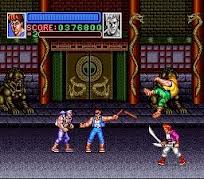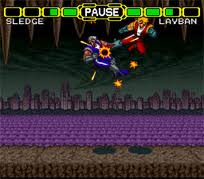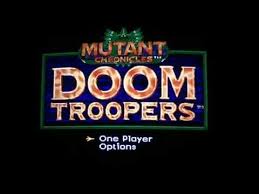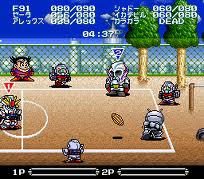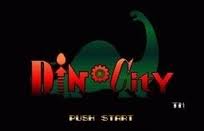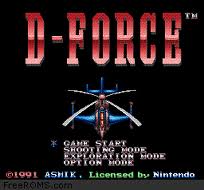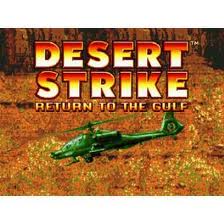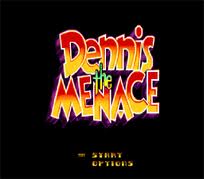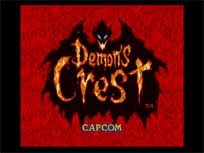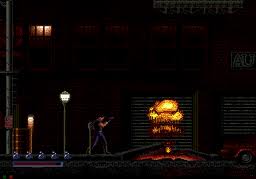Category: Action
653 game(s)All Action games for SNES
Hagane: The Final Conflict
GunForce: Battle Fire Engulfed Terror Island
GunForce: Battle Fire Engulfed Terror Island (ガンフォース Ganfosu?), or simply titled as GunForce, is a side-scrolling action shooting game produced by Irem for the arcades in 1991. The game was later ported by Bits Studios and published by Irem to the Super Famicom exclusively in Japan in 1992.
Outside of Japan, it later received a sequel titled GunForce II, originally known in Japan as Geo Storm.
Ghost Sweeper Mikami: The Great Paradise Battle!!
Ghost Sweeper Mikami: The Great Paradise Battle!! (Japanese: GS美神 極楽大作戦!! Hepburn: Gōsuto Suīpā Mikami Gokuraku Daisakusen!!?) is a Japanese comedic horror manga series written and illustrated by Takashi Shiina. It was published by the weekly manga magazine Shōnen Sunday from 1991 to 1999. In 1993, it won the Shogakukan Manga Award for best shōnen manga. The series explores some folk religion themes such as possession, exorcism, shamanism, Yurei, and Yōkai.
The series was adapted as a 45-episode anime television series by Toei Animation called Ghost Sweeper Mikami (GS美神 Gōsuto Suīpā Mikami?) which ran on TV Asahi and the Asahi Broadcasting Corporation from 1993–1994, covering most parts of the first nine volumes of the Manga (total 39 volumes). The anime lead to the release of a movie, which had been the only existence of Mikami in the United States (released by Manga Video). The TV series has been licensed by Sentai Filmworks.
Gradius 3
Gradius III (グラディウスIII -伝説から神話ヘ- Gradiusu Surī: Densetsu kara Shinwa he?, Gradius III: From Legend to Myth) is a side-scrolling shooting game originally released for the arcades in Japan and other parts of Asia in 1989. It is the third sequel to the original Gradius for the arcades following Gradius II: Gofer's Ambition, and was followed by Gradius IV: Resurrection. Gradius III was rereleased for the Super Famicom in Japan in 1990, and for the Super Nintendo Entertainment System in North America in 1991 as a video game launch title. It was released as simply Gradius III (グラディウスIII Gradiusu Surī?). The arcade version was included with Gradius IV in a two-in-one compilation (Gradius III & IV) for the PlayStation 2 and in the Gradius Collection for the PlayStation Portable.
Goof Troop
Goof Troop (グーフィーとマックス - 海賊島の大冒険 Gūfii to Makkusu - Kaizoku Shima no Daibouken, lit. "Goofy and Max: The Adventures of Pirate Island") is an action-adventure video game, developed and released by Capcom in 1993 for the Super Nintendo Entertainment System/Super Famicom and based on the television series of the same name. The game can be played in multiplayer mode, wherein one player controls Goofy and the other Max.
This video game would become the first to have actually been designed by Shinji Mikami; who would later be known as the father of the survival horror video game genre. He developed the Resident Evil series later in his career.[3] Many of the "survival" elements that would appear in Mikami's later games would first appear in this non-horror video game.
Gods
Gods is a 1991 video game by The Bitmap Brothers where the player is cast as Hercules in his quest to achieve immortality. The game was first made for Amiga and Atari ST computers and then ported for various other platforms. Like other Bitmap Brothers' games, Gods was highly praised by critics thanks to the quality graphics and music.
The enemy AI was praised - it would adapt not only to the player position, but also to his skill. Some rooms contain inaccessible items - smaller "thieves" show up from a passage in the wall, try to grab the item and bring it back to another point in the room or disappear with it. The player is able to obtain the item if they shoot the thief at the correct time. Bonuses are awarded for reaching certain parts of the level under a certain limit of time or number of lives, bringing an object to a room or simply by playing poorly, where the game helps the player.
As was common with Bitmap Brothers, an external musician assured the game score, this time John Foxx as Nation 12.[1] The box cover illustration was designed by the British comic book artist Simon Bisley.
Ghoul Patrol
Ghoul Patrol is a Super Nintendo video game that is a sequel to Zombies Ate My Neighbors. It was released in September 1994 by LucasArts and later on the Wii Virtual Console in North America on January 25, 2010 and the PAL region on May 14, 2010. A Sega Mega Drive/Genesis version published by Virgin Interactive was also to be released, but it was cancelled before launch.
Gemfire
Gemfire (released in Japan as Royal Blood or ロイヤルブラッド Roiyaru Buraddo, Super Royal Blood or スーパーロイヤルブラッド Sūpā Roiyaru Buraddo in its Super Famicom version) is a medieval war game for the MSX, Nintendo Entertainment System, Super NES, FM Towns, Mega Drive/Genesis, MS-DOS, and later Windows, developed by Koei. The object in the game is to unify a fictional island by force. Players use soldiers and knights, as well as fantasy units such as magicians, dragons or gargoyles in order to capture the castle needed to control that particular territory.
A sequel, Royal Blood II, was released in the Japan market for Japanese Windows.
Mary Shelley's Frankenstein
Mary Shelley's Frankenstein is a video game for multiple platforms that is based on the 1994 film of the same name. These systems include the Super Nintendo Entertainment System, the Sega CD and the Sega Genesis. The Sega CD version includes a bonus game: Bram Stoker's Dracula.
Flashback
Flashback, released as Flashback: The Quest for Identity in the United States, is a 1992 science fiction cinematic platform game developed by Delphine Software of France and published by U.S. Gold in United States and Europe, and Sunsoft in Japan.
The game was directed, written/designed and partially programmed by Paul Cuisset, who had previously created the adventure game Future Wars. Flashback was initially released for the Amiga in 1992, then ported to MS-DOS, Acorn Archimedes, Sega Mega Drive/Genesis and Super Nintendo in 1993. CD-ROM versions of Flashback for the Mega-CD, 3DO, CD-i, MS-DOS, Apple Macintosh and the FM Towns were released during 1994 and 1995, together with a cartridge version for the Atari Jaguar in 1995.
Originally advertised as a "CD-ROM game on a cartridge", the game features fully hand-drawn backdrops and all animation is rotoscoped, giving movements an unusual fluidity, similar to that of the earlier Prince of Persia. The capture technique of Flashback was invented independently of Prince of Persia, and used a more complicated method of first tracing video images onto transparencies.
The game was a commercial and critical success and was listed in the Guinness World Records as the best-selling French game of all time. It was followed by a sequel titled Fade to Black in 1995. In 2013, a Flashback remake by VectorCell was released for the PC and consoles.
First Samurai
The First Samurai is a platform game that involves the player on a quest as the first samurai in the history of ancient Japan to survive in a world of evil and rival swordsmen.
Firepower 2000
Super SWIV (Firepower 2000 in the US) is a top-down shoot 'em up released for the Super Nintendo Entertainment System in 1992. It was released as Mega SWIV on the Mega Drive in 1994. It is the third game in the series, following 1988's Silkworm and 1991's SWIV for home computers. It was followed by SWIV 3D in 1996.
Firestriker
Firestriker (ホーリーストライカー?, lit. "Holy Striker") is an overhead view action video game that was released on December 17, 1993 in Japan and on October 1994 in North America exclusively for the Super Nintendo Entertainment System.
Final Fight Guy
Guy (ガイ Gai?) is a video game character who first appeared in the 1989 arcade beat-em-up Final Fight by Capcom. Guy, along with other Final Fight characters, has also been a recurring player character in the Street Fighter fighting game series since Street Fighter Alpha: Warriors' Dreams in 1995. Guy is a crimson-clad ninpō master of Japanese descent who has been taught the Bushin (武神 Warrior God?) form of ninjutsu. The kanji, 武神, written on Guy's top literally translates to "God of War".
In the original Final Fight he aides his friend Cody as well as Metro City Mayor Mike Haggar in rescuing Jessica, who is Haggar's daughter and Cody's girlfriend. Guy was excluded from the SNES version of the game, but a special version replacing Cody with Guy was also released. While he is not a playable character in the sequel Final Fight 2, Guy factors into the storyline as his girlfriend and her father are captured. Guy returned to the Final Fight series as selectable character in Final Fight 3. He also appears in Final Fight: Streetwise, but is not playable in the game's story mode. His sister-in-law is Maki Genryusai, who was introduced as one of the protagonists of Final Fight 2.
The character has been well received, often being named to various lists of top Street Fighter characters. His popularity with fans has resulted in Capcom adding him to many of its newer fighting games.
Final Fight 3
Final Fight 3, released in Japan as Final Fight Tough (Japanese: ファイナルファイト タフ?), is a side-scrolling beat 'em up by Capcom originally released for the Super Nintendo Entertainment System in 1995. It is the second sequel to Final Fight released for the Super NES, following Final Fight 2, and like its predecessor, it was produced by Capcom's consumer division with no preceding arcade version released.
The game features the return of Guy from the original Final Fight along with series mainstay Haggar and also introduces new characters Lucia and Dean. The game's plot takes them through their efforts to rid Metro City of the new Skull Cross gang. Final Fight 3 introduced new moves, as well as branching paths during gameplay and multiple endings. Also available is the option to fight alongside a CPU-controlled partner.
The next Final Fight game released, Final Fight Revenge, eschewed the traditional side-scrolling beat'em up gameplay in favor of a one-on-one 3D fighting game format.
Final Fantasy VI
Final Fantasy VI (ファイナルファンタジーVI Fainaru Fantajī Shikkusu?) is a role-playing video game developed and published by Square (now Square Enix), released in 1994 for the SNES as a part of the Final Fantasy series. Set in a fantasy world with a technology level equivalent to that of the Second Industrial Revolution, the game's story focuses on a group of rebels as they seek to overthrow an imperial dictatorship. The game features fourteen permanent playable characters, the most of any game in the main series.
It was ported by Tose with minor differences to Sony's PlayStation in 1999 and Nintendo's Game Boy Advance in 2006, and it was released for the Wii's Virtual Console in Japan in March 15, 2011, followed by the PAL region on March 18, 2011 and North America on June 30, 2011. The game was known as Final Fantasy III when it was first released in North America, as the original Final Fantasy III had not been released outside of Japan at the time. However, most later localizations used the original title. Final Fantasy VI was the first game in the series to be directed by someone other than producer and series creator Hironobu Sakaguchi; the role was filled instead by Yoshinori Kitase and Hiroyuki Ito. Yoshitaka Amano, a long-time contributor to the Final Fantasy series, returned as the image and character designer, while regular composer Nobuo Uematsu wrote the game's score, which has been released on several soundtrack albums.
Released to critical acclaim, Final Fantasy VI was a landmark title for the role-playing genre and is often considered one of the greatest video games of all time. Its Super Nintendo and PlayStation versions have sold over 3.48 million copies worldwide to date as a stand-alone game, as well as over 750,000 copies as part of the Japanese Final Fantasy Collection and the North American Final Fantasy Anthology. Final Fantasy VI has won numerous awards since its release.
Final Fantasy V
Final Fantasy V (ファイナルファンタジーV Fainaru Fantajī Faibu?) is a medieval-fantasy role-playing video game developed and published by Square (now Square Enix) in 1992 as a part of the Final Fantasy series. The game first appeared only in Japan on Nintendo's Super Famicom (known internationally as the Super Nintendo Entertainment System). It has been ported with minor differences to Sony's PlayStation and Nintendo's Game Boy Advance. An original video animation produced in 1994 called Final Fantasy: Legend of the Crystals serves as a sequel to the events depicted in the game. It was released for the PlayStation Network on April 6, 2011 in Japan. An enhanced port of the game, with new high resolution graphics and touch-based interface, was released for iPhone and iPad on March 28, 2013 with Android released on September 25, 2013.
The game begins as a wanderer named Bartz investigates a fallen meteor. There, he encounters several characters, one of whom reveals the danger facing the four Crystals that control the world's elements. These Crystals act as a seal on Exdeath, an evil sorcerer. Bartz and his party must keep the Crystals from being exploited by Exdeath's influence and prevent his resurgence.
Final Fantasy V has been praised for the freedom of customization that the player has over the characters, achieved through the greatly expanded Job System. Despite being released only in Japan, the Super Famicom version sold more than two million copies. The PlayStation version has earned "Greatest Hits" status, selling more than 350,000 copies.
Final Fantasy IV
Final Fantasy IV (ファイナルファンタジーIV Fainaru Fantajī Fō?) is a role-playing video game developed and published by Square (now Square Enix) in 1991 as a part of the Final Fantasy series. The game was originally released for the Super Famicom in Japan and has since been rereleased for many other platforms with varying modifications. The game was re-titled Final Fantasy II during its initial release outside of Japan as the original Final Fantasy II and Final Fantasy III had not been released outside of Japan at the time. However, later localizations used the original title.
The game's story follows Cecil, a dark knight, as he tries to prevent the sorcerer Golbez from seizing powerful crystals and destroying the world. He is joined on this quest by a frequently changing group of allies. Final Fantasy IV introduced innovations that became staples of the Final Fantasy series and role-playing games in general. Its "Active Time Battle" system was used in five subsequent Final Fantasy games, and unlike prior games in the series, IV gave each character their own unchangeable character class.
With its character-driven plot, use of new technologies and critically acclaimed score by Nobuo Uematsu, Final Fantasy IV is regarded as a landmark of the series and the role-playing genre. The various incarnations of the game have sold more than four million copies worldwide. An enhanced remake, also called Final Fantasy IV, with 3D graphics was released for the Nintendo DS in 2007 and 2008. A sequel, Final Fantasy IV: The After Years, was released for Japanese mobile phones in 2008, and worldwide via the Wii Shop Channel on June 1, 2009. In 2011, both Final Fantasy IV and The After Years were released for the PlayStation Portable as part of the compilation Final Fantasy IV: The Complete Collection, which also included a new game, set between the two; Final Fantasy IV: Interlude. An iOS port of the Nintendo DS remake was released on December 20, 2012, as well as an Android version on June 4, 2013.
Final Fantasy III
Final Fantasy III (ファイナルファンタジーIII Fainaru Fantajī Surī?) is a role-playing video game developed and published by Square in 1990 for the Family Computer as the third installment in the Final Fantasy series. It is the first numbered Final Fantasy game to feature the job-change system.
The story revolves around four orphaned youths drawn to a crystal of light. The crystal grants them some of its power, and instructs them to go forth and restore balance to the world. Not knowing what to make of the crystal's pronouncements, but nonetheless recognizing the importance of its words, the four inform their adoptive families of their mission and set out to explore and bring back balance to the world.
The game was originally released in Japan on April 27, 1990. It had never been released outside of Japan until a remake was released on the Nintendo DS on August 24, 2006. At that time, it was the only Final Fantasy game not previously released in North America or Europe. There had been earlier plans to remake the game for Bandai's WonderSwan Color handheld, as had been done with the first, second, and fourth installments of the series, but the game faced several delays and was eventually canceled after the premature cancellation of the platform. The Nintendo DS version of the game was positively received internationally, selling over one million copies in Japan.
It was also released for the many other systems: the Japanese Virtual Console version (Famicom version) on July 21, 2009 (Wii) and January 8, 2014 (Wii U), an iOS port of the Nintendo DS remake on March 24, 2011, an Android version on March 12, 2012, a PlayStation Portable version on late September 2012 (Downloadable only version outside of Japan via PlayStation Network) and Android-based Ouya console on April 11, 2013.
Final Fantasy 2
Final Fantasy Mystic Quest
Final Fantasy Mystic Quest, released as Mystic Quest Legend in PAL regions and as Final Fantasy USA: Mystic Quest (ファイナルファンタジーUSA ミスティッククエスト Fainaru Fantajī Yū Esu Ē Misutikku Kuesuto?) in Japan, is a role-playing video game for the Super Nintendo Entertainment System. The game was released as a spin-off to Square's popular Final Fantasy series of video games. Final Fantasy Mystic Quest was first released in North America in 1992 and marketed as a "simplified role-playing game...designed for the entry-level player"[1] in an attempt to broaden the genre's appeal.[2] The game's presentation and battle system is broadly similar to that of the main series, but it differed in its inclusion of action-adventure game elements. Along with Final Fantasy Adventure, Final Fantasy Mystic Quest was the first Final Fantasy game to be released in Europe.
In the game, the player controls a youth named Benjamin in his quest to save the world. His goal is to reclaim a set of stolen crystals that determine the state of the world's four elemental powers. The gameplay takes a departure from the main series in a variety of ways. Many series staples are eliminated, such as random battles, save points, manual equipment, and the party system. The game received middling reviews and sales in North America and Japan, citing its simplified gameplay and lack of depth in the game's story. Over time, the game has kept the reputation for being a "beginner's Final Fantasy", but has been praised for its music.
Fighter's History
Fighter's History (ファイターズヒストリー Faitāzu Hisutorī?) is a series of competitive fighting games that were produced by Data East during the 1990s. The original Fighter's History was first released for the arcades in 1993 and then ported to the Super Nintendo Entertainment System in 1994. Two different sequels were produced: Fighter's History Dynamite (ファイターズヒストリーダイナマイト Faitāzu Hisutorī Dainamaito?), known in Europe as Karnov's Revenge, for the Neo Geo in 1994, followed by Fighter's History: Mizoguchi Kiki Ippatsu!! (ファイターズヒストリー 〜溝口危機一髪!!〜 Faitāzu Hisutorī: Mizoguchi Kiki Ippatsu!!?, "Mizoguchi's Moment of Crisis!!"), released exclusively in Japan for the Super Famicom in 1995.
At the time of the first game's release, Capcom U.S.A. sued Data East Corp. over Fighter's History due to what Capcom U.S.A. felt were infringements on its Street Fighter II property. Capcom U.S.A. lost the case on grounds that the copied elements were scenes a faire and thus excluded from copyright.[1] Data East Corp.'s largest objection in court was that their 1984 arcade game Karate Champ was the true originator of the competitive fighting game genre, which predated the original Street Fighter by three years.[2]
The main unique feature of the Fighter's History series is its "weak point system". By repeatedly hitting an opponent's weak point, the player can temporarily stun them once per round, leaving the opponent open for an attack. The location of an opponent's weak spot varies with each character and is usually represented by a specific article of clothing (i.e.: a headband, a vest, a mask).
Fatal Fury Special
Fatal Fury Special (餓狼伝説SPECIAL, Garō Densetsu Special?, "Legend of the Hungry Wolf Special") is a 1993 head-to-head fighting game produced by SNK originally released for the Neo Geo arcade and home platforms. It is an updated version of Fatal Fury 2, introducing several changes to the gameplay system while expanding the available character roster.
Fatal Fury 2
Fatal Fury 2 (餓狼伝説2 ~新たなる闘い~, Garō Densetsu 2 Aratanaru Tatakai?, "Fatal Fury 2: The New Battle") is a 1992 fighting video game released by SNK for the Neo Geo arcade and home platforms. It is the sequel to Fatal Fury: King of Fighters and the second game in the Fatal Fury franchise.
In North America, the video game was released for the Super NES and Sega Genesis in 1994.
Fatal Fury
Fatal Fury: King of Fighters (餓狼伝説 ~宿命の闘い~ Garō Densetsu Shukumei no Tatakai?, "Fatal Fury: The Battle of Destiny") is a 1991 head-to-head fighting game released by SNK for the Neo Geo arcade and home platforms. Fatal Fury was SNK's first fighting game for the Neo Geo system and served as the inaugural game in their Fatal Fury series, as well as the first game to depict the fictional "King of Fighters" tournament (which became the basis for the later The King of Fighters games). Many of SNK's mainstay characters, including the Bogard brothers Terry and Andy, friend Joe Higashi, and their nemesis Geese Howard, made their debut in this game.
Family Dog
A TV Show was later turned into a Super Nintendo game about the life of an everyday family dog. The player has to go three places such as the home where the dog lives, a dog pound and the woods to defeat stereotypical obstacles and enemies like dog catchers and cats.
Equinox: Solstice 2
Equinox, known in Japan as Solstice II (ソルスティスII?), is an isometric 3D action–puzzle-hybrid video game for the SNES. It is the sequel to Solstice, a Nintendo Entertainment System game.
Eek! the Cat
Sleepwalker is a platform game developed by CTA Developments and published by Ocean Software for the Amiga, Amiga CD32, C64 and Atari ST in 1993. It was later ported to DOS. Sleepwalker was later re-released in 1994 using the Eek! The Cat license for the Super Nintendo
Earthworm Jim 2
Earthworm Jim 2 is a run and gun platform video game starring an earthworm named Jim in a robotic suit who battles evil. It is a sequel to the original Earthworm Jim, and the second and final game in the Earthworm Jim series developed by original creators Doug TenNapel, David Perry, and Shiny Entertainment. It was released in late 1995 and early 1996 depending on region and video game console, initially being released for the Sega Genesis and Super Nintendo, before being ported to many other consoles.
Earthworm Jim
Earthworm Jim is a run and gun platform video game featuring an earthworm named Jim in a robotic suit who battles evil. Created by Doug TenNapel and designed by David Perry, the game was developed by Shiny Entertainment and Playmates Interactive Entertainment. It was released for the Sega Genesis in 1994, and subsequently ported to a number of other video game consoles.
The game was noted for its fluid, cartoon-like animation. It was well-received by critics, and received a sequel, Earthworm Jim 2, in 1995. Fifteen years later, Gameloft developed a high definition remake for the PlayStation Network and Xbox Live Arcade, titled Earthworm Jim HD, in 2010.
E.V.O. Search for Eden
E.V.O.: Search for Eden, originally released in Japan as 46 Okunen Monogatari: Harukanaru Eden e (46億年物語 はるかなるエデンへ?, "4.6 Billion Year Story: To Distant Eden"), is a side-scrolling action video game developed by Almanic Corporation and published by Enix for the Super Nintendo Entertainment System. Released in 1992 for Japanese audiences, the game was later translated and released in North America in 1993 by Enix America Corp. Combining all the aspects of traditional platforming with one single aspect of role-playing video games, the game involves the player navigating a creature through a number of side-scrolling levels while undergoing bodily evolution to cope with ever-changing environments. The game is heavily based on Almanic's original title 46 Okunen Monogatari: The Shinka Ron released exclusively in Japan in 1990 for the PC-9801 home computer.
Spanning a period of over a billion years, the game's story involves Gaia, daughter of the sun and mystical embodiment of the Earth, guiding the player through five distinct geological periods of the planet's history. Beginning the game as a fish, the player must travel across the planet defeating enemies and gaining the strength to evolve into more powerful and complex organisms before eventually earning a chance to enter the paradise realm of Eden, becoming Gaia's immortal partner. Crystals with the ability to influence evolution are laden throughout the player's quest, with the mystery of their origin becoming a secondary factor to the main story.
Dungeon Master
In the Dungeons & Dragons (D&D) role-playing game, the Dungeon Master (often abbreviated as DM) is the game organizer and participant in charge of creating the details and challenges of a given adventure, while maintaining a realistic continuity of events. In effect, the Dungeon Master controls all aspects of the game, except for the actions of the player characters, (PCs) and describes to the other players what they see and hear.
The title was invented for the TSR Dungeons & Dragons RPG, and was introduced in the second supplement to the game rules (Blackmoor). To avoid infringement of TSR's trademarks, and to describe referees in role-playing genres other than sword and sorcery, other gaming companies use more generic, terms, like Game Master, Game Operations Director, Judge, Referee or Storyteller, with some using more esoteric titles related to the genre or style of the game, such as Keeper of Arcane Lore, or even completely surreal titles such as Hollyhock God.
Also, in Faiths and Pantheons, the Faerunian Overgod Ao answers to a superior entity, insinuated to be the "Dungeon Master".
Dream TV
Dream TV is an action video game for the Super Nintendo where the player has to guide two youngsters through a nightmarish land of evil television shows (using a similar plot to the campy movie Stay Tuned and Crystal Dynamics' video game Gex). The player has to escape by defeating stereotypical television villains and finding pieces of a puzzle. The game features complex labyrinths.
Drakkhen
Drakkhen is a 3D role-playing video game which was initially developed for the Amiga and Atari ST, and subsequently ported to several other platforms, including MS-DOS and the Super Nintendo Entertainment System.
Originally released by Infogrames in 1989, it was later modified for North American release by Draconian, a label from Data East, in 1990. Drakkhen was ported in 1991 to the Super Nintendo by Kemco-Seika, who made further revisions to the game.
Drakkhen was notable for being among the first role-playing games to feature a three-dimensional playing field. It did not employ a fully 3D game engine, instead implementing a hybrid approach using vectors and bitmapped character-scaling algorithms. Drakkhen features an animated day-night cycle, and the ability to wander freely about the game world, both rarities for a game of its era.
The game spawned a sequel, Dragon View, for the SNES.
Dragons Lair
Dragon's Lair is a video game franchise that began with the laserdisc video game Dragon's Lair originally released for the arcades in 1983.
Dragon View
Dragon View, is a video game released for the Super Nintendo Entertainment System in November 1994. Released in Japan as Super Drakkhen (スーパードラッケン?) and otherwise known as Drakkhen II, it is meant to be a prequel to Drakkhen although it bears little resemblance to its predecessor. It uses the same pseudo-3D overworld system for which the series is most famous. Other features of Dragon View are its side-view action role-playing game (RPG) hybrid gameplay (used when exploring more detailed areas such as towns and dungeons), its well translated first person storyline, and its emphasis on player-driven undirected exploration.
Dragon - The Bruce Lee Story
Dragon: The Bruce Lee Story is a multiplatform fighting video game based on the film Dragon: The Bruce Lee Story, which is a semi-fictionalized account of the life of Bruce Lee.
Double Dragon 5 - The Shadow Falls
Double Dragon V: The Shadow Falls is a 1994 American-produced sequel to Technōs Japan's Double Dragon series.[4] Unlike the previously produced Double Dragon games, Technōs had little or no credited involvement in the development of the game outside of licensing the series' name to publisher Tradewest (the publisher of the first NES version of Double Dragon and the Super NES title Super Double Dragon). Instead, the game was developed by Leland Interactive Media, a subsidiary of Tradewest. Unlike the previous games, which were side-scrolling fighting action games or beat-em-ups, Shadow Falls is a head-to-head fighting game based on the animated Double Dragon TV series in the style of Capcom's 1991 arcade-hit Street Fighter II. Technōs would later produce its own fighting game based on the Double Dragon movie the following year simply titled Double Dragon for the Neo Geo. Shadow Falls was originally released for the Super NES and Sega Mega Drive/Genesis, and later released for the Atari Jaguar by Telegames (publisher of the Atari Lynx version of the first Double Dragon) in 1995.
Double Dragon 2
Doomsday Warrior
Doomsday Warrior, known in Japan as Taiketsu!! Brass Numbers (対決!!ブラスナンバーズ lit. "Confrontation!! Brass Numbers"?), is a 1992 Super NES fighting game developed and published by Telenet Japan's subsidiary Laser Soft in Japan on November 20, 1992 and later localized by Renovation Products in North America on March 1993. It was created during the fighting game trend of the 1990s that was popularized by Capcom's Street Fighter II.
Mutant Chronicles - Doom Troopers
Doom Trooper is a collectible card game designed by Bryan Winter. It is based on concepts from the Mutant Chronicles franchise. Players use warriors to attack and gain either Promotion Points or Destiny Points. Promotion points can be used to win; Destiny Points are used to purchase more warriors and equipment. There are 13 different card types and over 1100 different cards available.
Doom Trooper was originally published by now defunct Target Games.
Donald Duck - Maui Mallard in Cold Shadow
Dodgeball
Dino City
DinoCity, originally released in Japan as Dinowars Kyōryū Ōkoku e no Daibōken (ダイナウォーズ 恐竜王国への大冒険?, "Dinowars: Adventures in the Dinosaur Kingdom"), is a platform video game developed and published by Irem Corporation for the Super Nintendo Entertainment System.
The game is loosely based on the 1991 television American film Adventures in Dinosaur City by Smart Egg Pictures, and borrows many of the film's characters, settings, and basic plot while providing its own unique art direction and style. Initially released in July 1992 for Japanese audiences, the game was later made available in North America the following September. The game centers on Timmy and his friend Jamie, two young children who are accidentally transported to a world resembling prehistoric Earth populated by anthropomorphic dinosaurs. While a device which will allow them to return home exists in this environment, a critical component has been stolen by Mr. Big, leader of a gang of Neanderthals known as The Rockeys, leaving the player to guide Timmy or Jamie to his castle to retrieve it. They are assisted by Rex, a Tyrannosaurus, and Tops, a Protoceratops, each with their own play-styles.
D-Force
D-Force, known in Japan as Dimension Force (ディメンションフォース?), is a 1991 vertical scrolling shooter video game developed and published in Japan by Asmik for the Super Famicom and later localized and published in North America by Asmik Corporation of America for the Super NES. It involves an Apache helicopter set on defeating an evil Middle Eastern dictator. There are seven levels which feature six countries. Some of the levels involve switching altitudes in order to attack enemies from a different height, which uses Mode 7, one of the main features of the Super NES.
Desert Strike - Return to the Gulf
Desert Strike: Return to the Gulf, commonly known as Desert Strike, is a shoot 'em up video game released by Electronic Arts (EA) in February 1992 for Sega's Mega Drive.[1] The game was later released on several other formats such as the SNES, including a much upgraded version for the Amiga home computer. The game was inspired by the Gulf War and depicts a conflict between an insane Middle Eastern dictator, General Kilbaba, and the United States. The player controls a lone Apache helicopter and attempts to destroy enemy weapons and installations, rescue hostages and capture enemy personnel, while managing supplies of fuel and ammunition.
The lead designer, Mike Posehn, had no video game experience prior to developing Desert Strike. Inspired by Choplifter, he aimed to create a nonlinear game with smoothly animated vehicles. Posehn, a PhD in Mechanical Engineering, developed a camera system with momentum to mimic realistic helicopter movements. Three-dimensional (3D) modeling was used to generate the vehicle sprites, which were later touched up on the pixel level with color.
Desert Strike was a strong commercial success: it was a chart-topping best seller and at the time Electronics Arts' highest ever selling game. The game also received a favourable critical response, with several magazines awarding scores of over 90%. Reviewers praised the game's enjoyability, mix of action and strategy, graphics and sound. There was some controversy regarding the game's subject matter, with commentators criticising it as in poor taste due the proximity of its release to the recently ended Gulf War.
Dennis the Menace
Demon's Crest
Demon's Crest (Japanese: デモンズブレイゾン 魔界村 紋章編 Hepburn: Demonzu Bureizon Makaimura Monshō-hen?, "Demon's Blazon: Demon World Village Crest Volume"), is a side-scrolling platform video game developed and published by Capcom for the Super Nintendo Entertainment System. It is the third video game starring Firebrand (an enemy character from the Ghosts 'n Goblins series, known as "Red Arremer" in the Japanese version), following Gargoyle's Quest and Gargoyle's Quest II.
Demolition Man
Demolition Man is a pair of action video games based on the film of the same name. Acclaim Entertainment published the 16-bit version, which features run and gun gameplay, for the Super NES, Sega Genesis and Sega CD. Virgin Interactive released a completely different game for the 3DO that combined several distinct gameplay styles. In both games, the player controls John Spartan, the main character from the film, as he attempts to find and defeat his nemesis, Simon Phoenix.
